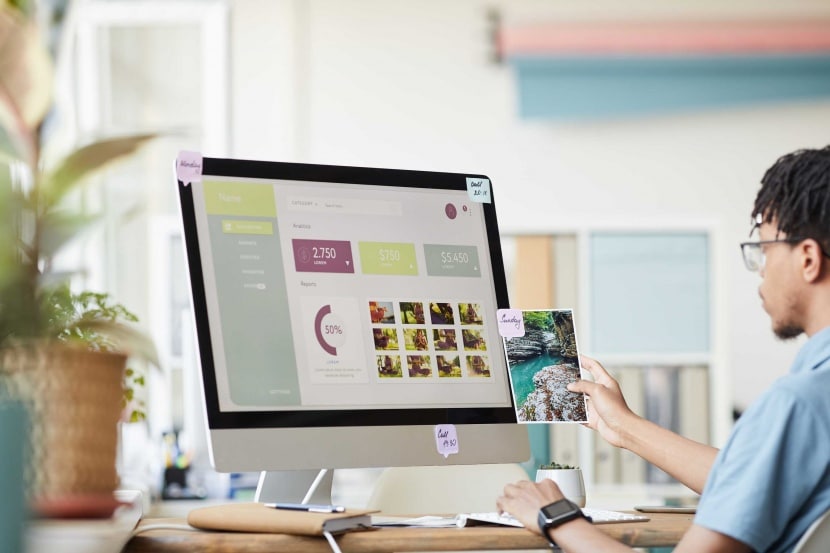When considering starting an online business, many people follow the below structure to cultivate success, make a business grow and create repeat custom over and over again:
- Find a need and fill it.
- Write copy that sells.
- Design and build an easy-to-use website.
- Use search engines to drive traffic to your site.
- Establish an expert reputation for yourself.
- Follow up with your customers and subscribers with email.
- Increase your income through back-end sales and upselling.
Anyone, from a newbie to seasoned online entrepreneur, can benefit from this process in learning how to start a business online.
Step 1: Start a business that fills a need.
Most people who are just starting out make the mistake of looking for a product first and the begin considering the market it would fall into.
To boost your chances of success, start with a market. The key is to find your niche and a group of people who are searching for a solution to a problem, but not obtaining many results. The internet makes this kind of market research easy:
Look at online forums to see what questions people ask and what problems they're trying to solve.
Perform keyword research to find keywords that a lot of people are searching, but don't have much competition with other sites.
Check out your potential competitors by visiting their sites and taking note of what they're doing to fill the demand. Then you can use what you've learned and create a product for a market that already exists -- and do it better than the competition.


Step 2: Write copy that sells.
Creating a sales copy formula that takes visitors through the selling process from the moment they arrive to the moment they make a purchase is a tried and tested way of cultivating an online business:
- Create an interest with a compelling headline.
- Describe the problem your product can solve.
- Establish your credibility as a solver of this problem.
- Add testimonials from people who have used your product.
- Talk about the product and how it benefits the user.
- Make an offer.
- Make a strong guarantee.
- Create urgency.
- Ask for the sale.
Throughout your copy, you need to focus on how your product or service is uniquely able to solve people's problems or make their lives better. Think like a customer and ask "What's in it for me?"
Step 3: Design and build your website.
Once you've got your market and product, and you've nailed down your selling process, now you're ready for your small-business web design. Remember to keep it simple. You have fewer than five seconds to grab someone's attention. Here are some ideas to reflect upon:
- Choose one or two plain fonts on a white background.
- Make your navigation clear and simple, and the same on every page.
- Only use graphics, audio or video if they enhance your message.
- Include an opt-in offer so you can collect e-mail addresses.
- Make it easy to buy -- no more than two clicks between potential customer and checkout.
- Your website is your online storefront, so make it customer-friendly.


Step 4: Use search engines to drive targeted buyers to your site.
Pay-per-click advertising is the easiest way to get traffic to a brand-new site. It has two advantages over waiting for the traffic to come to you organically. First, PPC ads show up on the search pages immediately, and second, PPC ads allow you to test different keywords, as well as headlines, prices and selling approaches. Not only do you get immediate traffic, but you can also use PPC ads to discover your best, highest-converting keywords. Then you can distribute the keywords throughout your site in your copy and code, which will help your rankings in the organic search results.
Step 5: Establish an expert reputation for yourself.
People use the internet to find information. Provide that information for free to other sites, and you'll see more traffic and better search engine rankings. The secret is to always include a link to your site with each piece of information.
- Give away free, expert content. Create blogs, videos or any other content that people will find useful. Distribute that content through online article directories or social media sites.
- Include "send to a friend" links on valuable content on your website.
- Become an active expert in industry forums and social networking sites where your target market hangs out.
You'll reach new readers. But even better, every site that posts your content will link back to yours. Search engines love links from relevant sites and will reward you in the rankings.


Step 6: Use the power of email marketing to turn visitors into buyers.
When you build an opt-in list, you're creating one of the most valuable assets of your online business. Your customers and subscribers have given you permission to send them an email. That means:
- You're giving them something they've asked for.
- You're developing lifetime relationships with them.
- The response is 100 percent measurable.
- Email marketing is cheaper and more effective than print, TV or radio because it's highly targeted.
Anyone who visits your site and opts into your list is a hot lead and there's no better tool than email for following up with those leads.
Step 7: Increase your income through back-end sales and upselling.
One of the key components of generating custom in internet marketing strategies is to develop every customer's lifetime value. At least 36 percent of people who have purchased from you once will buy from you again if you follow up with them. Closing that first sale is by far the most difficult part -- not to mention the most expensive. So use back-end selling and upselling to get them to buy again; appeal to their needs, make them feel valued and you already have a head start against your competitors!
- Offer products that complement their original purchase.
- Send out electronic loyalty coupons they can redeem on their next visit.
- Offer related products on your "Thank You" page after they purchase.
Reward your customers, build a relationship and value their custom; this is the ultimately the basis for gaining their loyalty and trust, which leads to a great foundation for repeat business and sales for you!

Other Recent Posts
Why Some Leaflets Go Straight to the Bin (And How to Avoid It)
Leaflet distribution can be a powerful marketing tool—when done right. But too often, businesses invest time and money into printing and distributing flyers, only to see them ignored or thrown away. Why does this happen? And more importantly, how can you ensure your leaflets capture attention instead of ending up in the bin? Let’s dive […]
The Psychology Behind Leaflet Colour Choices
Colour is one of the most powerful tools in marketing. It influences emotions, perceptions, and even decision-making. When designing a leaflet, choosing the right colours can mean the difference between grabbing attention or being ignored. But how do you decide which colours to use? In this article, we’ll explore the psychology behind leaflet colour choices […]
Avoiding Common Printing Mistakes in Leaflet Production
Leaflets are a powerful marketing tool, but even a small printing mistake can make your campaign look unprofessional, cost more money, or fail to deliver results. Whether you’re a business owner, marketer, or designer, understanding common printing mistakes can save you time, money, and frustration. Here’s a guide to the most common leaflet printing mistakes […]
How to Write a Headline for a Leaflet That Grabs Attention Instantly
When it comes to leaflet marketing, your headline is everything. It’s the first thing people see, and it determines whether they keep reading or toss your leaflet aside. A strong headline grabs attention, sparks curiosity, and makes people want to know more. But how do you craft a headline that stands out in a sea […]






